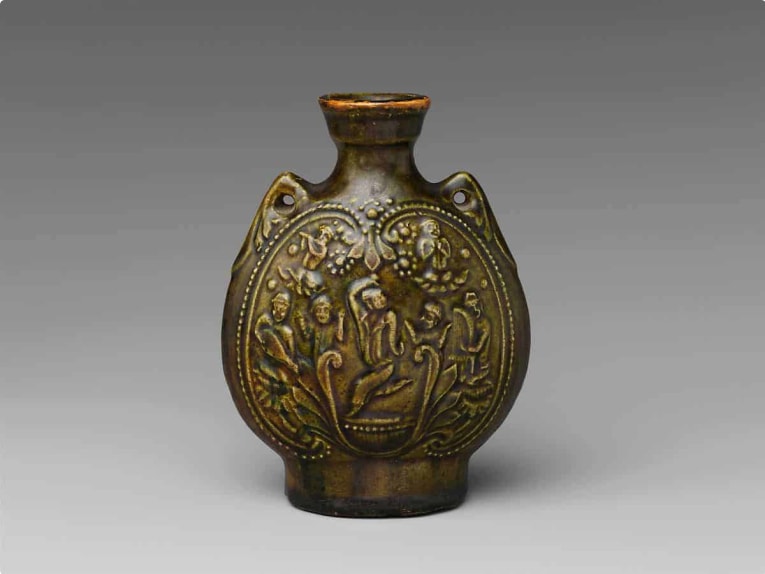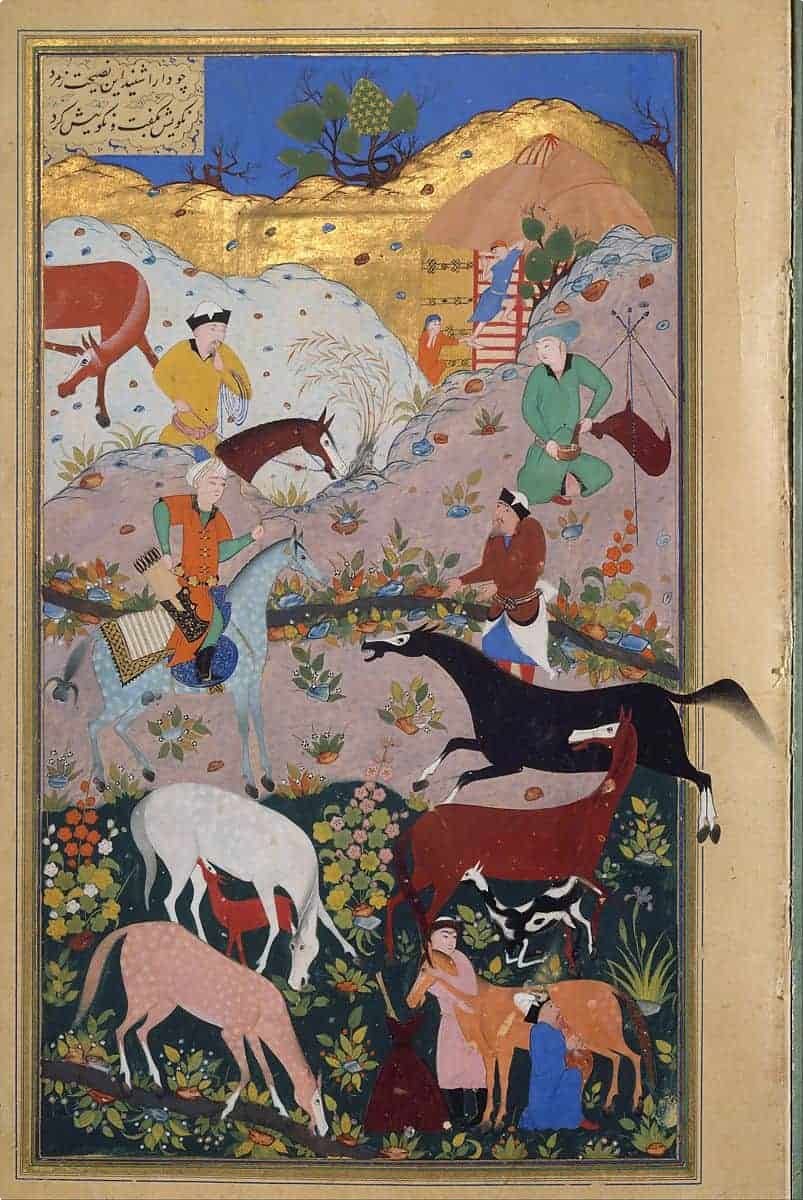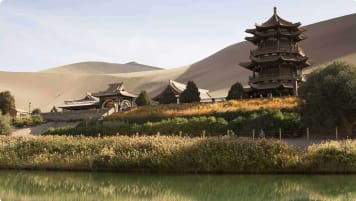Questions about Uzbekistan: The Definitive Guide
Explore and learn about on a Seniors small group tour of Uzbekistan and its pastoral, cultural and historic settlement. Visit Samanid Mausoluem, or Registan sq understand this country's role on the silk road.
6 Jul 19 · 2 mins read
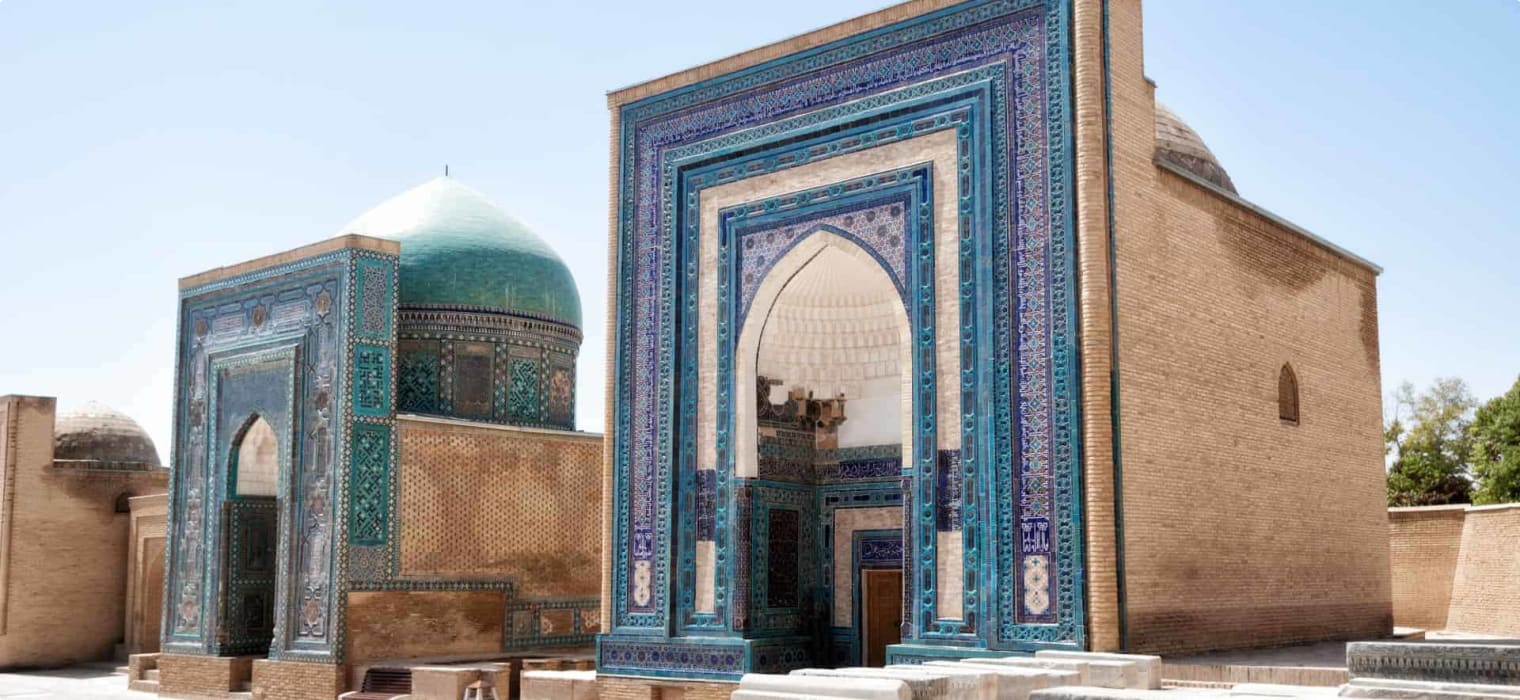
Questions about Uzbekistan fro senior travellers.
Odyssey Traveller specialises in crafting unforgettable experiences for senior and mature-aged travellers interested in learning whether as a couple or solo traveller.Providing adventure and educational programs to escorted small group tours since 1983. Odyssey has built up a reasonable knowledge bank to answer questions about Uzbekistan that travellers are likely to ask, as they make their plans to tour independently, or with us as part of a small group tour. We hope that this list of frequently asked questions and the answers we provide will help you with planning your next holiday.
Read on, but please do not hesitate to contact us via the website, or through email or chat if you have more questions about Uzbekistan or our other tours.
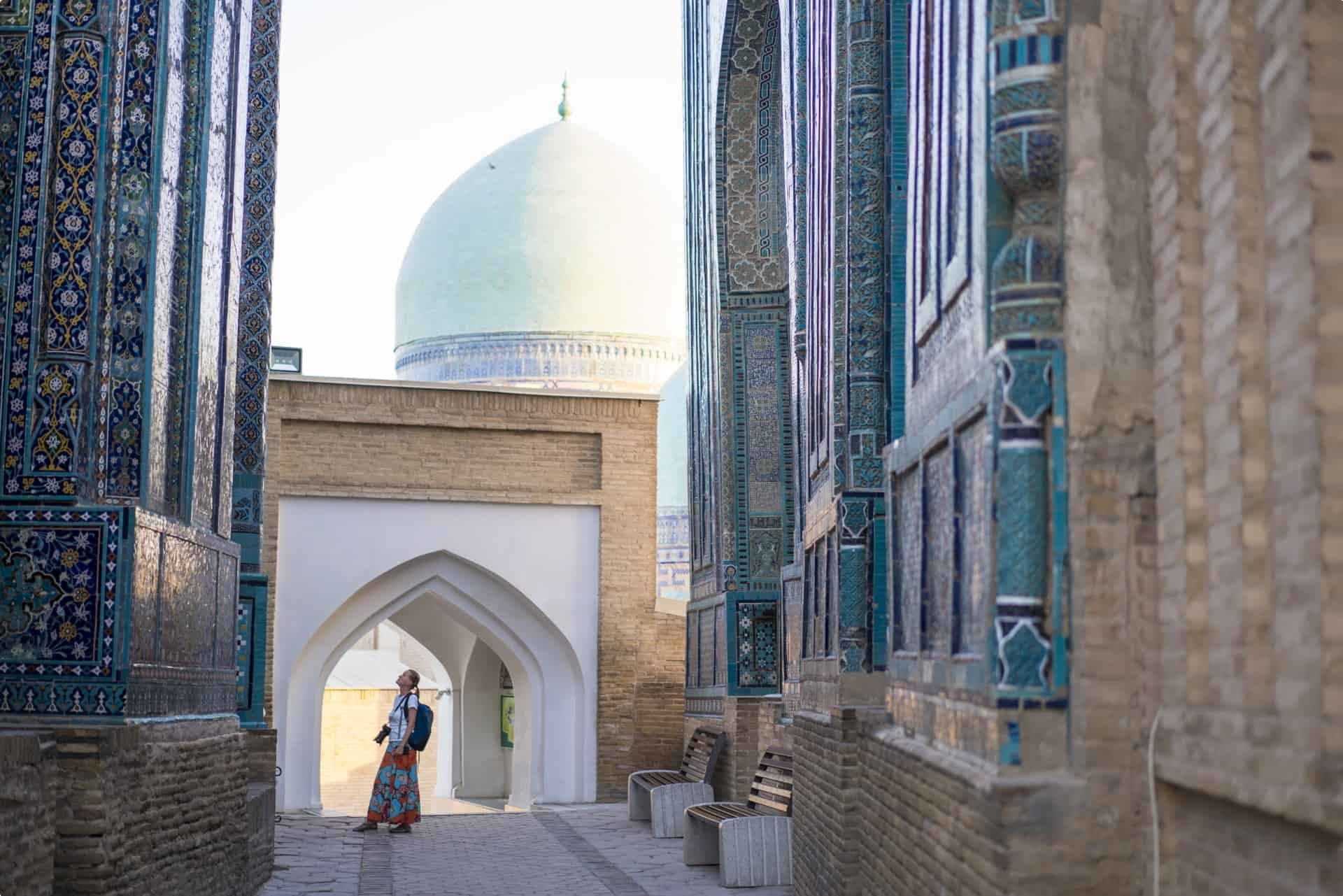
FAQs
Where is Uzbekistan?
Uzbekistan is a landlocked country in Central Asia. You might know of a group of countries in central Asia, all ending with the suffix ‘stan’. Uzbekistan is at the heart of these ‘stans’, with Kazakhstan to the north, Kyrgyzstan and Tajikistan to the east and south east, Afghanistan to the south, and Turkmenistan to the west.
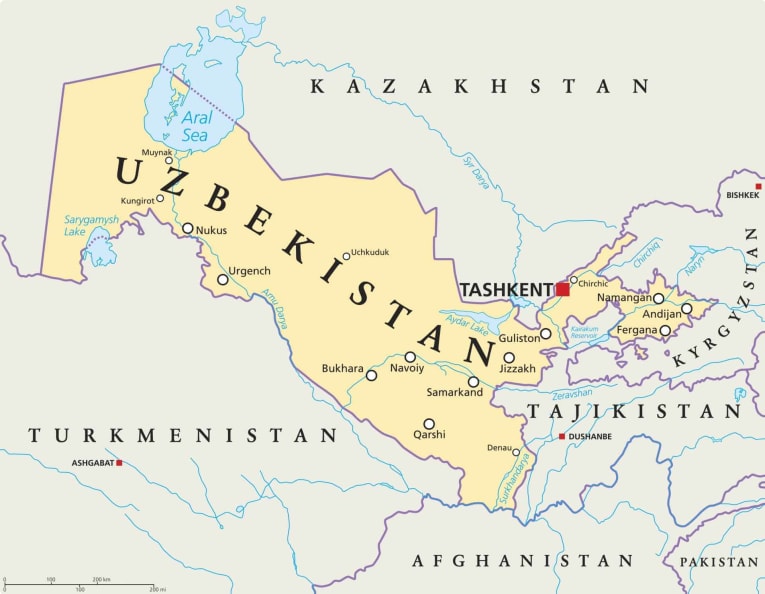
Uzbekistan is not just landlocked, but doubly so – as it is surrounded entirely by countries that are themselves landlocked countries. The only other country in the world to be doubly landlocked is Lichtenstein. The ‘stans’ are located right in the middle of Asia, with Russia to the north, China to the east, Afghanistan and India to the south, and Iran and the Middle East to the west, and such provide a fascinating blend of East and South Asia, the Middle East, and Europe.
What is the population of Uzbekistan?
Uzbekistan has a population of just over 30 million – the 46th largest in the world. That gives it the largest population in Central Asia, and makes it the biggest ‘stan’ (after Pakistan and Afghanistan, neither of which are in Central Asia). Though neighbouring Kazakhstan is much bigger geographically, the fertile Fergana Valley (in the eastern part of the country) has long been the centre of population in the region.
Who founded Uzbekistan?
Humans have lived in what is now Uzbekistan since the Paleolithic Period (Old Stone Age), from 55,000 to 70,000 years ago. More recently, an Indo-Iranian nomadic tribe known as the ‘Scythians’ by the ancient Greeks and ‘Sakas’ by the ancient Persians, lived in the region. Under the reign of the Persian Emperor Cyrus the Great, the ‘Sakas’ were incorporated into the Persian Empire. The area became the province of Songdiana, with a capital established at Samarkand, but historians debate the extent of Persian control. Culturally speaking, the area was under the Persian sphere of influence, and the people of Songdiana followed Zoroastrianism, the faith of the Achaemenid Empire and possibly the world’s oldest monotheistic religion.
The Sogdians constructed the famous oasis cities of Samarkand and Bukhara that became fabulously wealthy as centres of exchange on the Silk Road, facilitated trade (in silk and other products) between China, India, Persia, the Middle East, and the Roman and Byzantine Empires.
Over the following years, the region faced a succession of invaders. The first, Alexander the Great, would take Samarkand and Bukhara as part of his conquest of the Persian Empire. The region would become Persian again for several hundred years, but was then conquered by the Muslim Umayyad Caliphate during the reign of ‘Abd al-Malik (685-705 AD), with the result that the local population adopted Islam, still practiced in Uzbekistan today. Finally, the region was conquered by Genghis Khan and after his death was ruled by his son Chagatai Khan and his descendants.
In the 14th century, Samarkand became the capital of the notorious ruler Timur (known as Tamerlane the Great). Timur saw himself as the successor of Genghis Khan, and in order to re-establish the great Mongol empire, he led a campaign of invasions across Central Asia that reportedly led to the deaths of 17 million people.
The people known as the ‘Uzbeks’ finally reached the region in the 14th century, when a number of Turkish-Mongol tribes arrived from what is now Siberia. In 1495, these tribes conquered most of what is now known as Uzbekistan and established a dynasty, which ruled from Bukhara for a century. Uzbekistan’s khans became known for their Sunni religious orthodoxy and as cultured patrons of the arts who built the great seminaries and mosques of Bukhara. In the 18th century, this split into three independent khanates.
Who colonised Uzbekistan?
In the late 19th century, the khanates were invaded by the Russian Empire, becoming the Russian state of ‘Turkistan’. During this period, Uzbekistan’s intelligentsia was divided between traditionalists, who sought the continuance of old ways, and modernists, who wanted to transform religious, economic and governmental institutions.
After the Russian Revolution of 1917, Central Asia became part of the Soviet Union, divided into Soviet Socialist Republics (or SSRs) by Stalin in 1924. Though some Uzbeks rose to prominence in Soviet politics, the region was mostly ruled by Russians and Uzbeks remained underrepresented in the local Soviet bureaucracy, leading to the development of nationalism in the region.
Who is Uzbekistan’s president?
In August 1991, local Communist Party leaders, led by Islam Karimov, supported the Russian coup attempt against the reforming leader, Michael Gorbachev. When the coup failed, Karimov declared independence from the USSR.
The new country of Uzbekistan would remain authoritarian. Former leaders of the Communist Party were the only experienced politicians in the republic, and easily maintained power through fraudulent ballots. Opposition parties were prohibited from participating in elections and democratic activists were kidnapped and attacked.
In September 2016, Karimov died, leaving the long-serving prime minister Shavkat Mirziyoyev as interim president. Mirziyoyev has made some efforts to open the economy, lifting barriers to trade, but observers have continued to note authoritarian behaviours.
Is Uzbekistan safe?
The Australian government advises that travellers exercise a high degree of caution when visiting Uzbekistan, due to terrorist activity, and to avoid visiting regions bordering Tajikistan, Kyrgyzistan, and Afghanistan because of ongoing tensions in the region. But you shouldn’t let that put you off. Just make sure to be aware of your personal security, and use common sense – don’t go to areas that are affected by conflict, avoid protests, large gatherings and other demonstrations, and don’t flash your valuables around.
What to see in Uzbekistan?
Thanks to its long history at the heart of the Silk Road, Uzbekistan is filled with fascinating historical sites. Though the ancient architecture of Samarkand was destroyed by Genghis Khan, his spiritual successor Timur sought to cement his legacy through the magnificence of his hometown and capital. Registan square, the showpiece of the city, is lined by majestic madrassas (or centres of Islamic learning).
See also the Gur-e-Amir, the surprisingly modest burial site of Timur. Also spectacular are the intricately tiled Shah-i-Zinda, or mausoleums dedicated to early Islamic figures and rulers of Samarkand.
Nearby Bukhara, also on the Silk Road, is equally packed with historical sites. See the Ark, a fortress built in the 5th century and occupied until 1920, when it was bombed by the Red Army. It’s now mostly ruins, but the remaining royal quarters are home to several museums dedicated to Bukhara’s history.
The 47 metre tall Kalon Minaret was built by Arslan Khan in 1127. It was the tallest building in Central Asia for centuries, and so impressed Genghis Khan that he ordered his men to preserve it, even as they ransacked the rest of the city.
Central Asia’s oldest mosque, the Maghok-i-Attar is testament to the diverse cultures who passed through the Silk Road: in the 1930s, archaeologists found underneath the mosque parts of a 5th century Zoroastrian temple and an even earlier Buddhist temple. The mosque itself combines a 9th century façade and a 16th century reconstruction. According to legend, locals buried it in sand so that it would survive the Mongol invasion. In fact, when archaeologists began excavations in the thirties, only the top of the mosque was visible.
The most atmospheric remnants of the Silk Road can be found in the walled city of Khiva. Local laws provide that you can’t buy property in Khiva – land can only be passed down through the 3,000 families with ancestral claims.
This – along with its UNESCO world heritage status – means that the medieval city is well preserved. It’s easy to imagine the cosmopolitan traders of the silk road buying and selling camels, carpets, coffee beans, and the titular silk in this labyrinth of medieval streets, houses, and minarets.

Beyond the Silk Road, Uzbekistan has also been shaped by its Soviet history. The Tashkent Metro is considered to be one of the most beautiful and ornate metros in the world. Like the Soviet-era metros of Moscow, St Petersburg, Kiev, and Minsk, Tashkent’s metro was designed to bring art and culture into the daily lives of Soviet citizens. The stations reflect both Uzbek and Soviet culture, with some designs influenced by the famed geometric patterns of Uzbekistan’s mosques, while others pay homage to the Soviet space program and the Russian writer Alexander Pushkin. Photography in the metro was strictly banned until 2018.
A less salubrious Soviet legacy can be viewed on the remote shores of the Aral Sea. Due to botched Soviet-planned irrigation projects, the Aral Sea, once the second biggest ‘lake’ in Asia, is a fraction of its former size. But it retains a mysterious beauty, heightened by eerie remains of what once was, including the ‘cemetery of ships’ in Muynak, a testament to the thriving sea trade that once occurred.
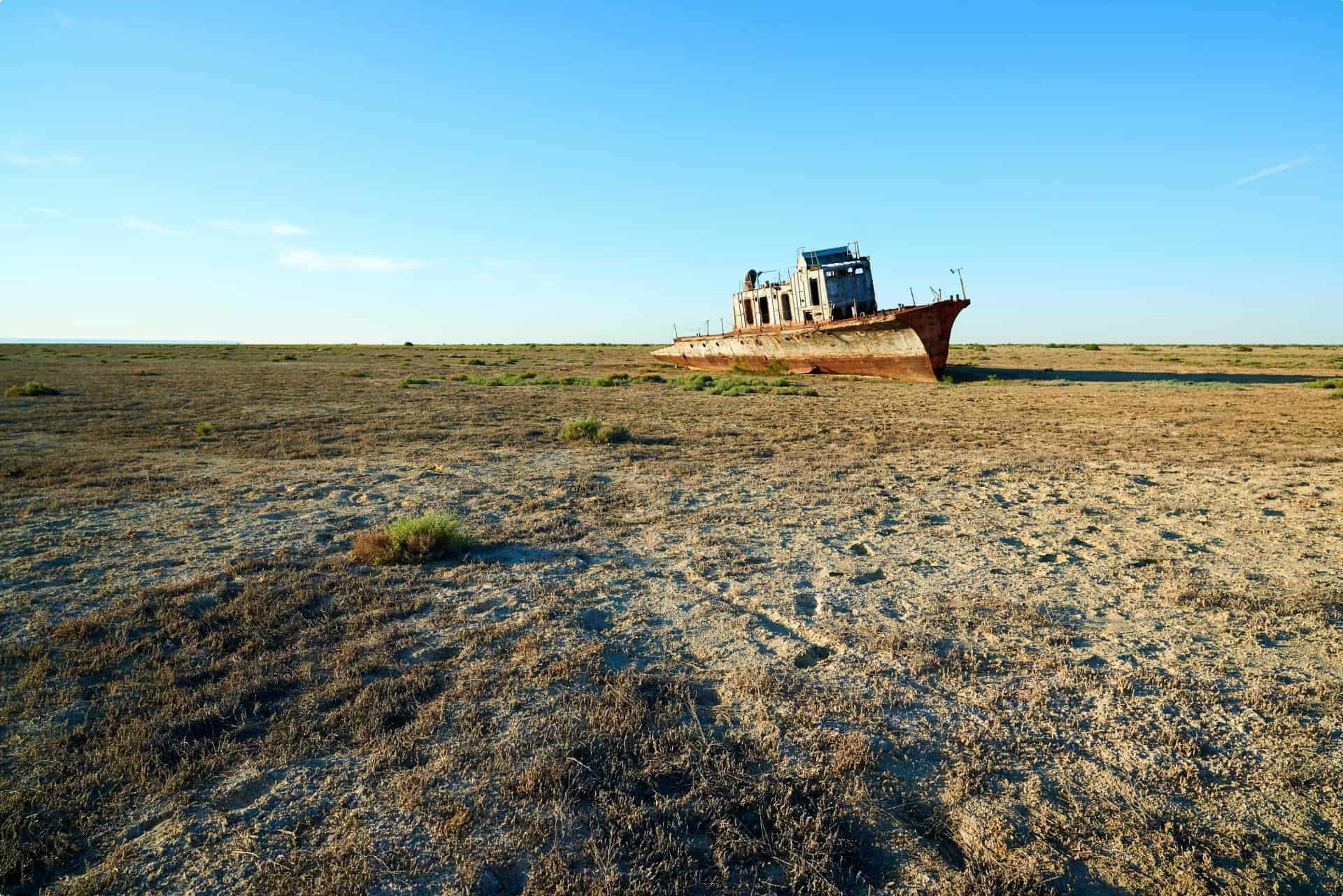
What to eat in Uzbekistan?
The local staple is plov, a Central Asian variant of pilaf consisting of rice, fried vegetables, and slices of meats. Salads are prominent in Uzbek cuisine, including bademjan (eggplant salad), achichuk salad (tomatoes, onions and spices) and tashkent salad (beef tongue, radishes and fresh greens accompanied by a yoghurt sauce). Other specialities include somsa, puff pastry stuffed with lamb meat and onion and lagman soup, a meat broth filled with lamb, noodles and vegetables.
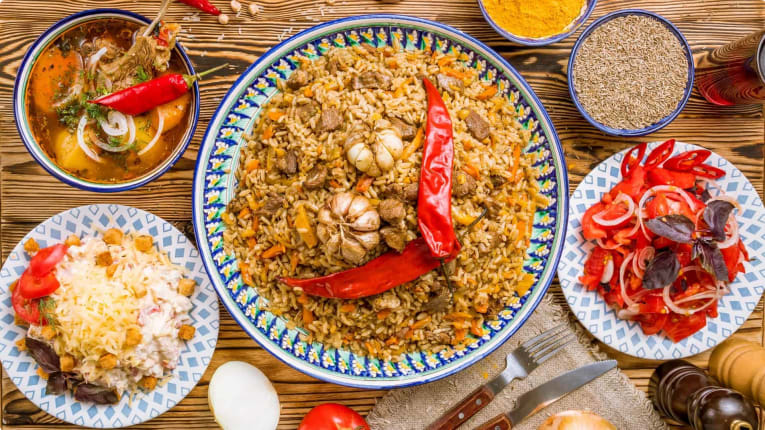
Tea is widely consumed in Uzbekistan, with black tea consumed in winter and green tea in the summer. You’ll certainly visit a tea house for a break and perhaps some light snacks. Despite the Islamic religion, remnant Soviet influence means that alcohol is widely available, particularly local forms of vodka and beer.
What to wear in Uzbekistan?
Uzbekistan has a continental climate, so make sure to pack for the weather in the season in which you’re visiting. In Samarkand, for instance, summer days reach an average of 35c in July, so bring light airy summer garments; while January highs are around 6 degrees, so requiring several warm layers.
Though there is no required dress code for travellers or locals in Uzbekistan, women visitors should remember that it is a relatively traditional Muslim country. While younger and urban women wear western fashion, many Uzbek women continue to wear traditional clothing that covers their ankles and wrists. If you visit in summer, consider wearing loose and light clothes that cover the arms and legs. Since you’ll probably be visiting a number of mosques, make sure to bring a headscarf to pop on if you need to cover your head and shoulders.
Make sure, too, to keep plenty of room for souvenirs. After all, it was here on the Silk Road that demand for exotic goods from faraway places was first created!
How to get to Uzbekistan?
Direct flights arrive in Tashkent from most European and Asian cities, though for Australian and New Zealand travellers, it’s likely that you’ll likely stop over in China or South Korea.
If you’re interested in visiting Uzbekistan, why not join an Odyssey Traveller tour? Our tour of the ‘Stans’ offers the opportunity to get off the tourist trail and explore countries little known in the West. Or why not retrace the steps of the ancient Silk Road traders who brought goods from X’ian in China to Bukhara and Samarkand?
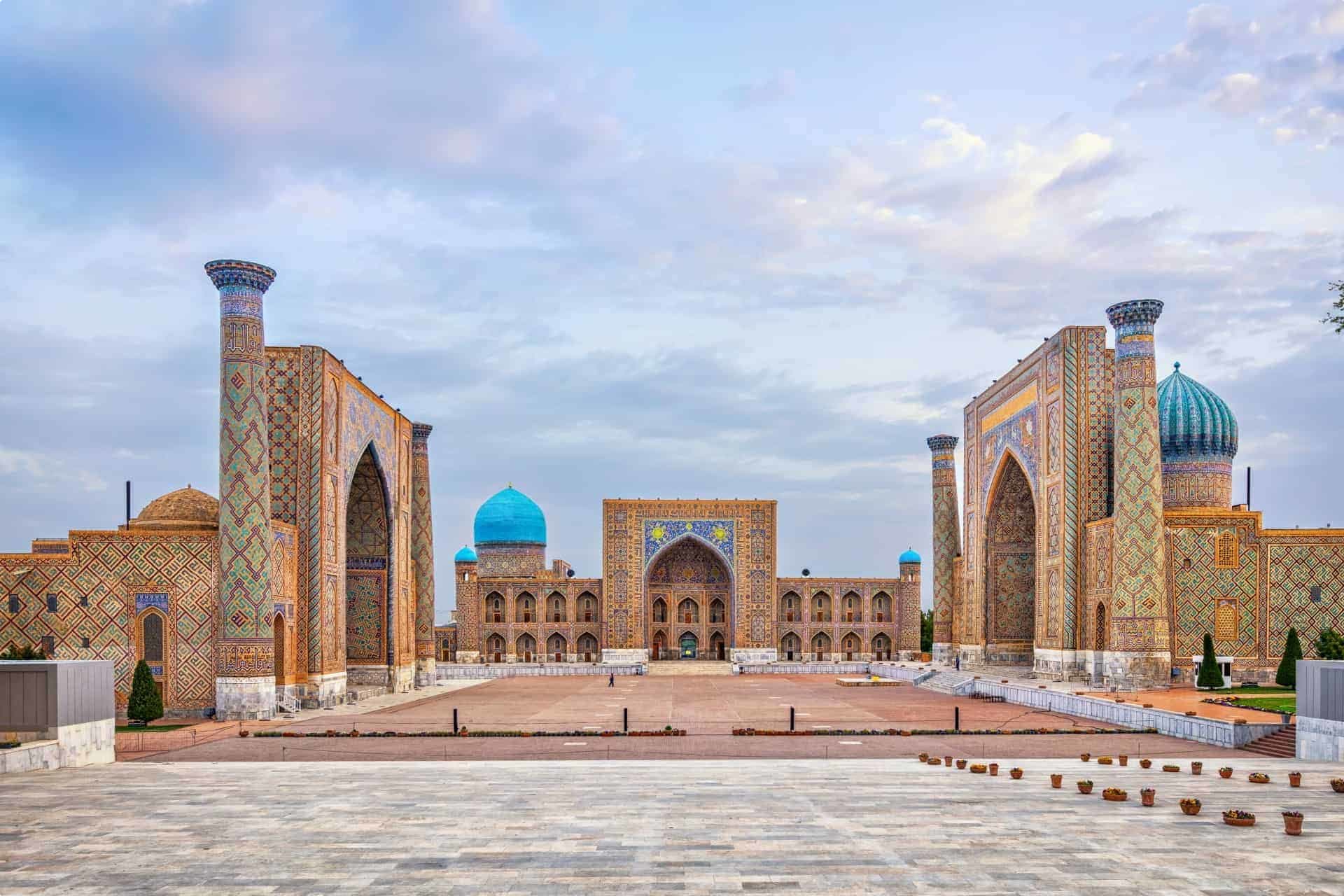

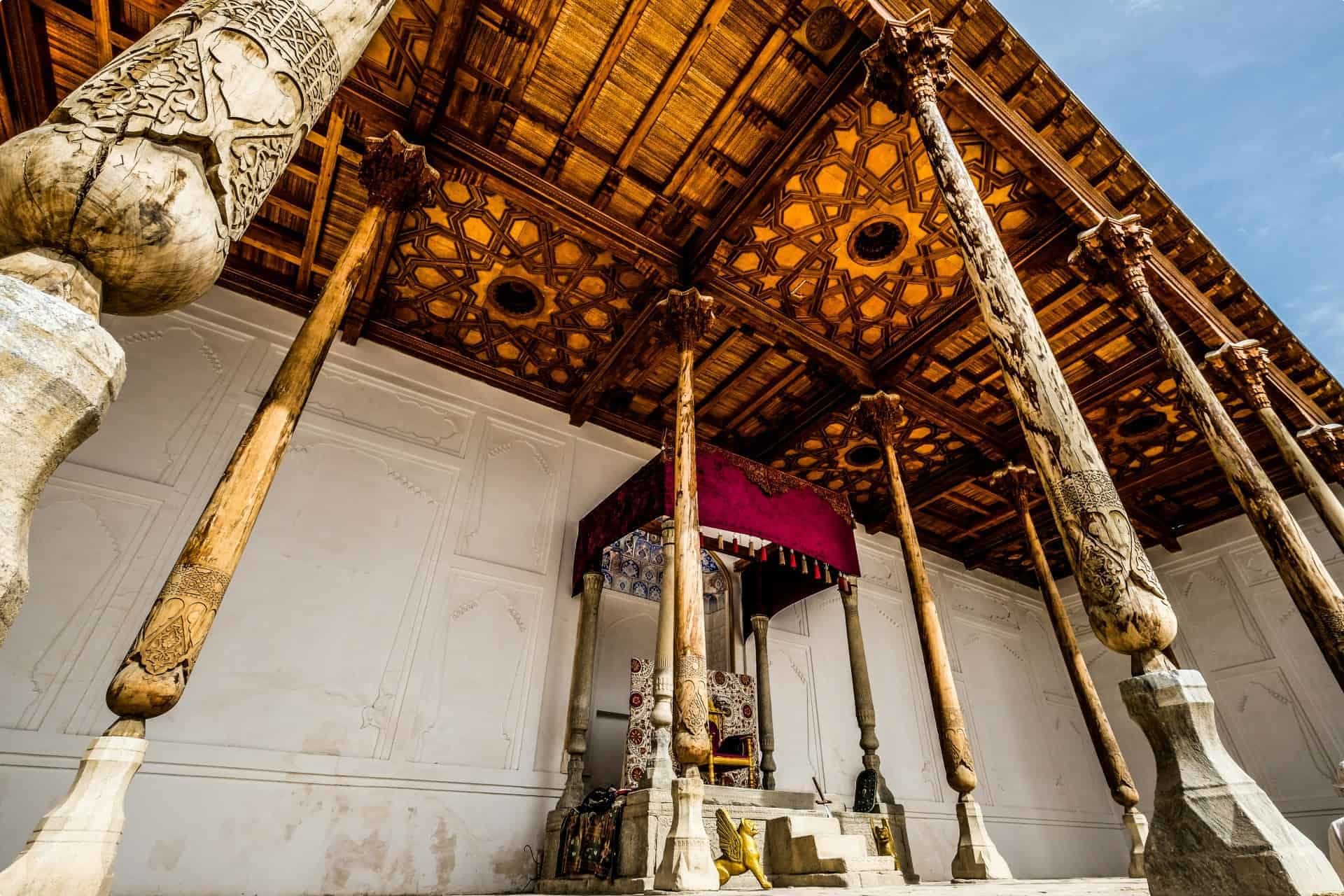
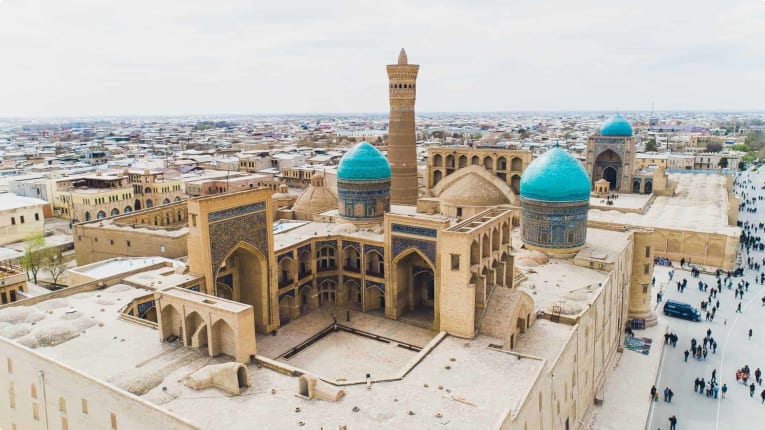
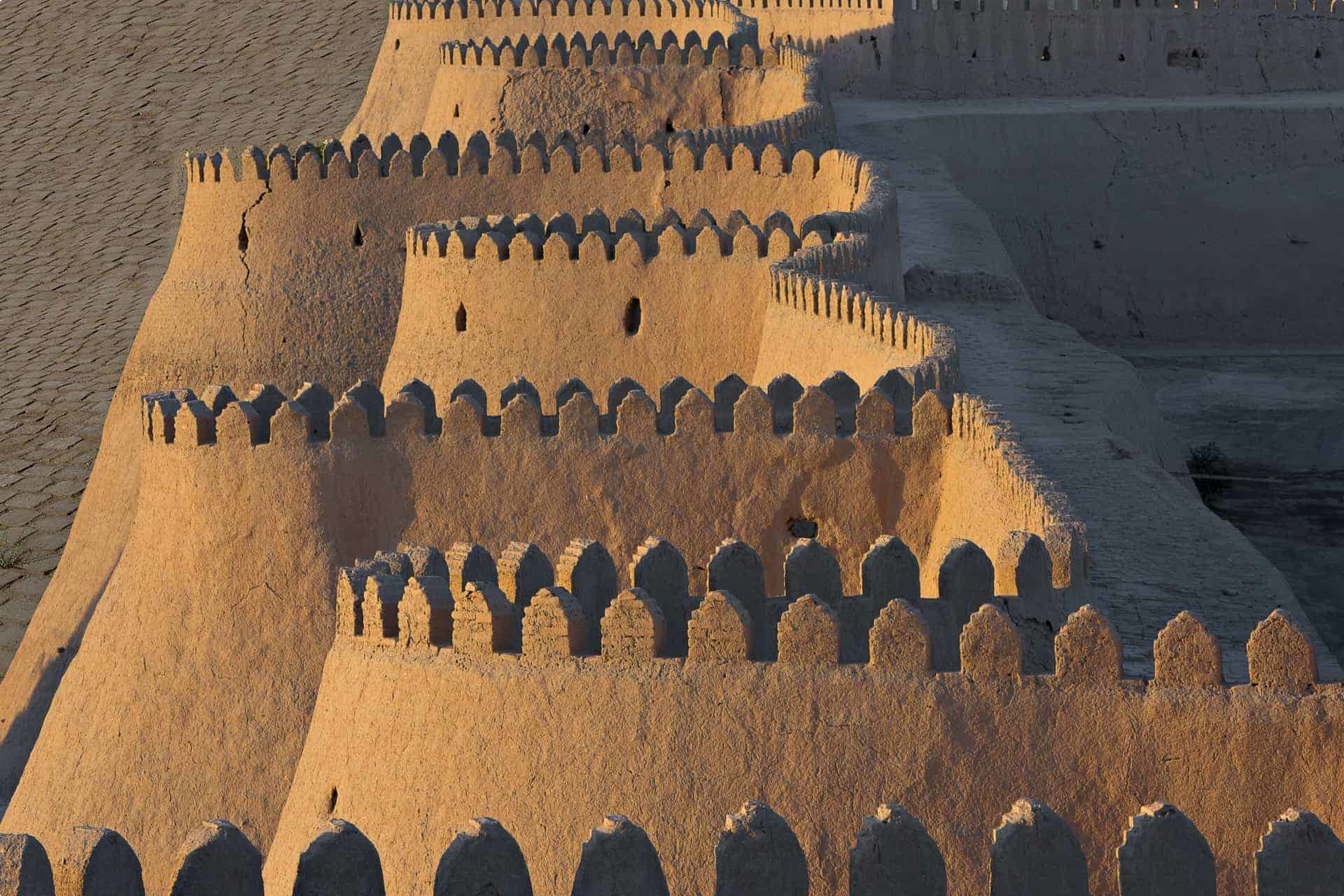

Related Tours
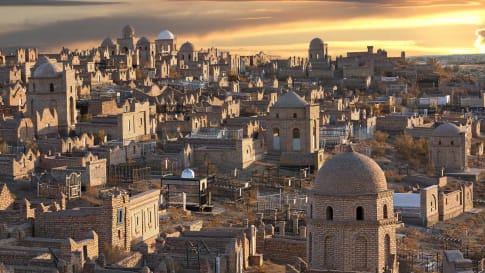
28 days
May, AugThe Stans Small Group Tour: Uzbekistan, Kazakhstan, Kyrgyzstan, and Turkmenistan
Visiting Kazakhstan, Kyrgyzstan
This journey is crafted for the adventurous traveller—whether solo or as a couple—seeking a small group tour through Central Asia. Be prepared for a variety of accommodations, scenic walking excursions, and a few full travel days. The itinerary blends stunning landscapes, a mix of ancient and modern history, as well as authentic encounters with local families and dramatically different ways of life.
From A$17,650 AUD
View Tour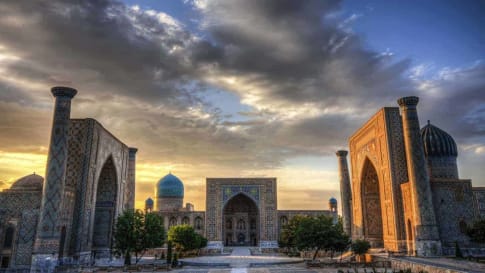
29 days
Aug, May, SepTravel on the Silk Road with Odyssey Traveller | Small Group Tour for Seniors
Visiting China, Kyrgyzstan
The Silk Road is an ancient trade route linking China and Imperial Rome through Central Asia. Few areas in the world remain as unexplored or offer such richness in terms of ancient and modern history, culture, and scenic diversity as Central Asia. Our Small group Silk road tours itinerary explores the Road through remote deserts and mountainous environments as we visit key sites between Xi'an and Bukhara.
From A$19,685 AUD
View Tour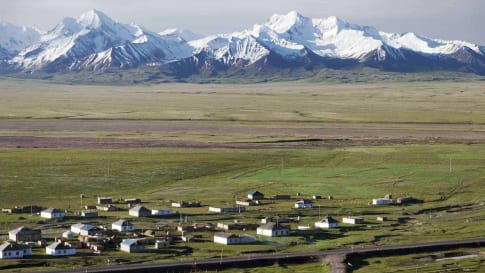
7 days
Jun, SepTajikistan Tour | Central Asian Small Group Tour
Visiting Tajikistan
We explore the country’s astonishing scenery and monuments. Tajikistan is the smallest of the 5 ‘Stans and is also the most mountainous. On our small group tour for couples and solo travelers we encounter many ranges and mountain chains where we reach well over 3,000 metres above sea level while crossing passes.
From A$4,950 AUD
View TourArticles
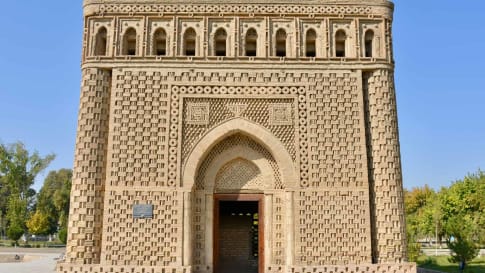
Highlights of Uzbekistan | Samanid Mausoleum
Highlights of Uzbekistan | Samanid Mausoleum The Samanid Mausoleum, dating from the 10th century, is the oldest Muslim monument in the city of Bukhara, Uzbekistan. This final resting place was built for Ismail Samani (or…

Explore Uzbekistan: The Definitive Guide
Exploring Uzbekistan In a 2018 article, The British newspaper The Telegraph described Uzbekistan as “the most fascinating country you’ve never been to”. Decades of isolation, particularly during Soviet rule, have pushed it down the list…

Travelling in Uzbekistan
Travelling in Uzbekistan This article Travelling in Uzbekistan is part of a series on The ‘Stans, Uzbekistan, Kazakhstan, Kyrgyzstan, and Turkmenistan. While these countries may be off the beaten track in terms of the usual…
